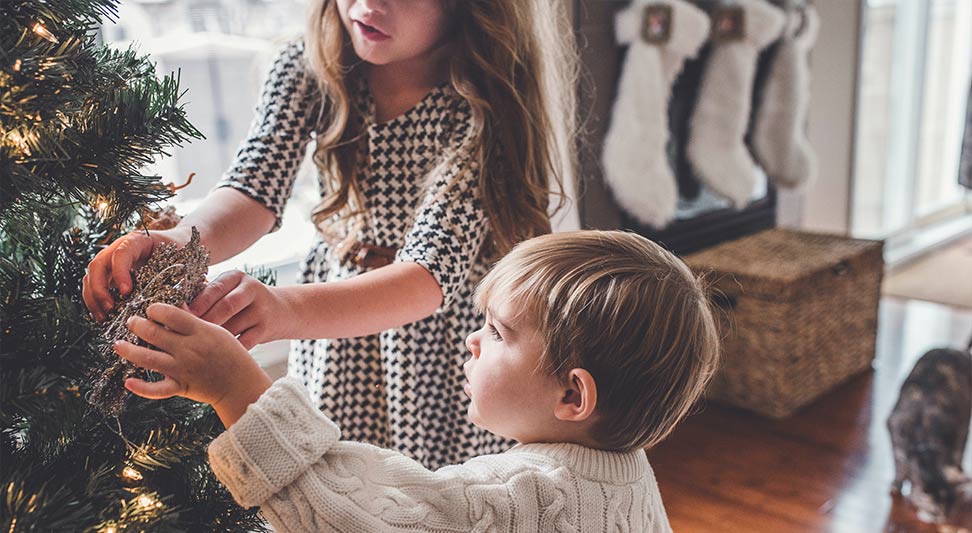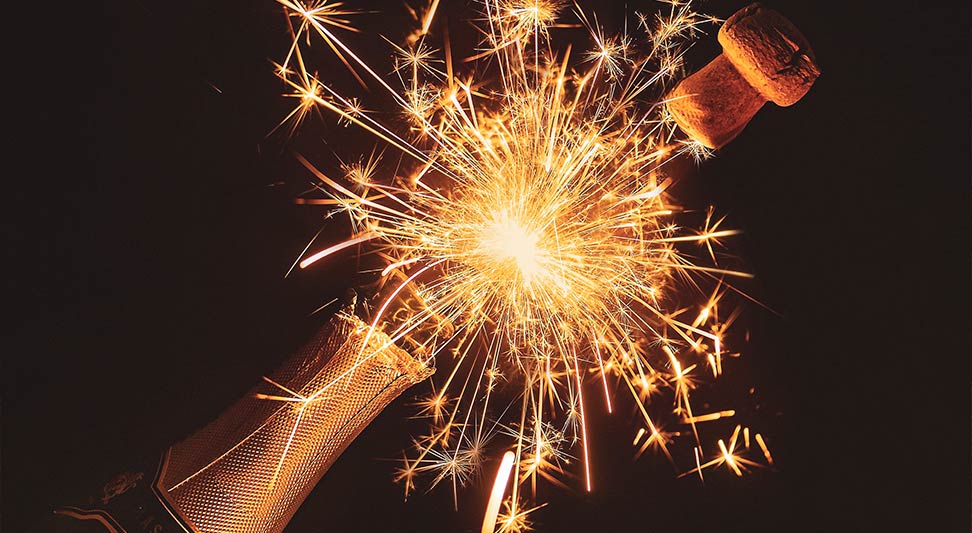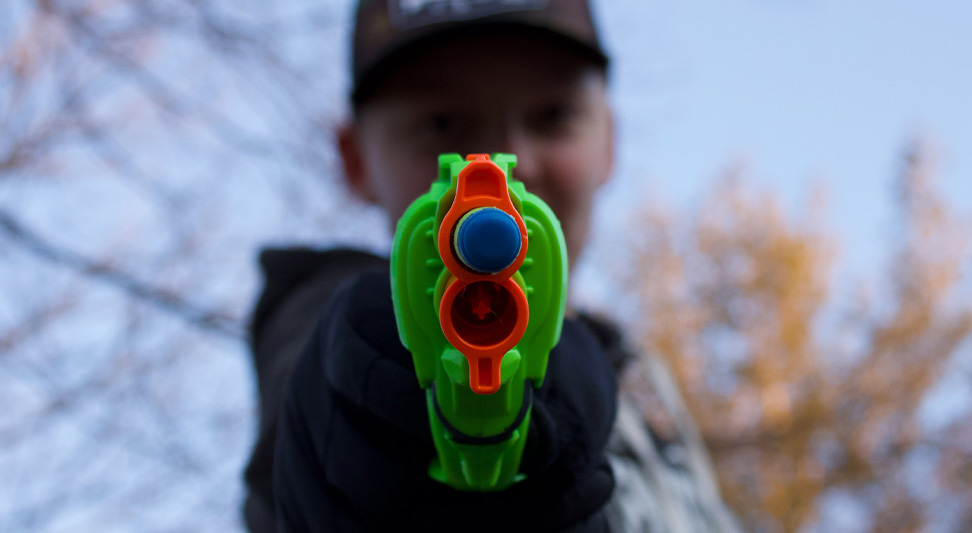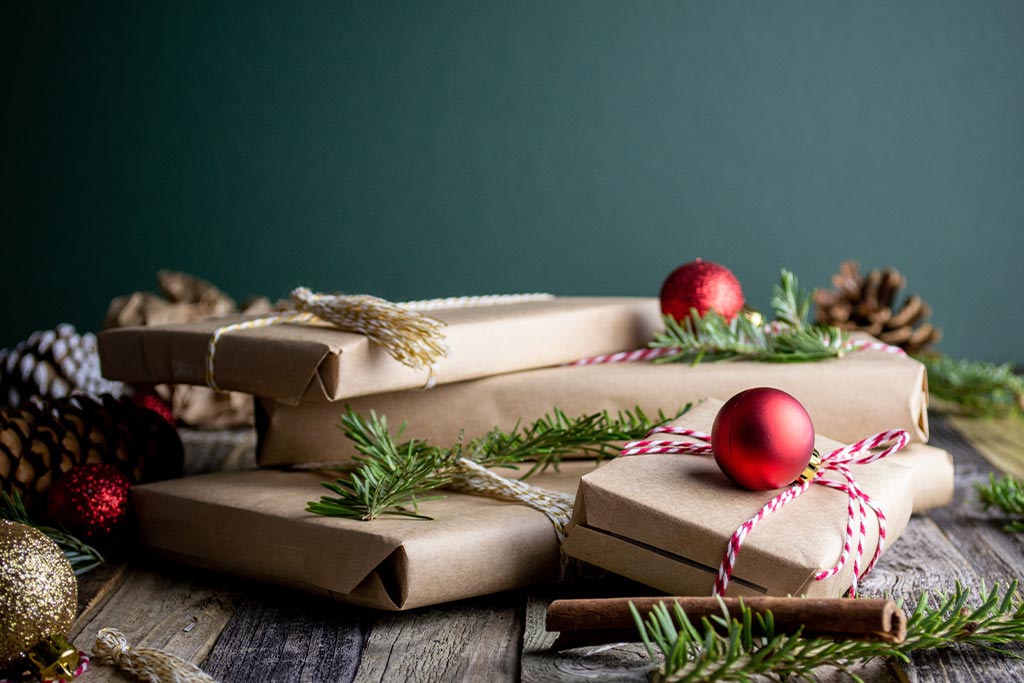Well, here we are at the end of 2021, and what can we say? While it wasn’t necessarily the glorious, post-COVID rebound year we were all hoping for, it wasn’t bad either.
Kind of like that week-old leftover Thanksgiving turkey you finally polished off. It started out so savory and moist. But by the time you fished the last couple of slices from the Tupperware container, they had to be smothered in mayonnaise and cranberry sauce and smashed between two slices of bread to be palatable.
But, hey, a dry turkey sandwich with mayonnaise and cranberry sauce (aka 2021) beats the heck out of the Spamwich that 2020 was any day.
Regardless of which sandwich you’d compare this past year to, you’re probably counting down the days until your calendar serves up a fresh set of months. And if you’re like us, you’re definitely going to pair it with a nice, tall glass of champagne.
If that’s the case, our advice to you is to be careful when you’re popping the champs. An errant cork can really put the “pain” in champagne!

In fact, that’s just one of the reasons the American Academy of Ophthalmology (AAO) has declared December Safe Toys & Celebrations Month. According to the AAO, 2.4 million eye injuries occur in the United States each year. The holiday season introduces a whole host of events and activities that could put you and your loved ones at greater risk for sustaining eye injuries.
From tree trimming to gift-giving, here are some activities to watch out for and the precautions to take this holiday season.
String up Your Lights With Care

Clark Griswold’s over-the-top light display has inspired many a suburban family to make their home brightest on the block. But covering every inch of your property in lights and lawn decor could be more hazardous than impressive.
First of all, it’s important to remember you’re dealing with electricity. When not handled properly, electricity can be incredibly dangerous. Secondly, be aware that unprotected eyes are incredibly vulnerable to stakes, clips, sparks, ladder, and roof debris.
Here are some tips to help you create a stunning light show, safely and responsibly:
- Wear protective eyewear
- Never set tools above your head
- Have a spotter hold the ladder
- Test your lights before hanging them
- Replace all missing or broken bulbs
- Don’t use indoor lights outdoors
- Only use extension cords rated for outdoor use
- Don’t overload outlets
- Don’t string together more strands than the packaging recommends
- Keep light plugs dry and off the ground
- Clearly mark stakes and tethers so you don’t trip over them
Trim the Tree Safely

Whether your Christmas tree comes out of a box or the ground, setting it up and accessorizing it could be more trouble than you bargained for.
Christmas Tree Syndrome is an actual thing. So, if you’re sensitive to seasonal allergies, be wary of bringing a real tree into your home. Pine pollen and mold growing on real trees can cause runny noses, trouble breathing, and itchy, watery eyes.
Both real and fake trees have sharp branches and shed needles and debris. It doesn’t matter if you’re cutting, connecting, fluffing, or decorating it, always wear protective eyewear while you’re handling your tree.
Popping Bottles Responsibly

The winter holidays are among the most popular times of year to gift and consume champagne. And it probably comes as no surprise that more flutes are raised and toasts are made on New Year’s Eve than any other holiday or occasion.
So if you see a bottle of bubbly or three making an appearance in your near future, follow these tips to make sure you’re toasting the holiday spirit, not your release from the ER.
- Control the cork. Keeping your face away from the cork, tear off the foil and remove the wire hood. Place a towel over the top of the bottle and grasp the cork. Point the bottle at a 45-degree angle away from yourself and any bystanders. Slowly and firmly twist the bottle, not the cork. Do this until the pressure in the bottle begins to push the cork out naturally.
- Chill the champs. Champagne bubbles are filled with gas that expands when warm. To preserve your eyesight and prevent the bottle from opening unexpectedly, always chill your Champagne in the fridge or on ice to about 45 degrees.
- Don’t shake, rattle, or roll. Agitating Champagne increases pressure. Never point a bottle in someone’s direction. The cork or spray could cost them their sight.
- Clink carefully. Aggressive toasts can break or shatter champagne glasses.
Safe Toys Are the Best Toys

Everybody loves seeing presents pile up under the tree and the look of sheer joy when a great gift is unwrapped. But when you’re buying toys and presents for kids, it’s important to think of eye health and safety, not just the wide-eyed excitement they might evoke.
Many of the toys on a kid’s Christmas wish list can lead to traumatic eye injuries if not used properly. These injuries include corneal abrasions, ocular hypema, retinal detachment, ruptured eyeballs, and even blindness.
The good news is that almost all eye injuries can be avoided by following a few simple safety tips.
- If buying toys with sharp, protruding, or projectile parts, make sure they’re age-appropriate. This includes play swords, Nerf guns, airsoft guns, BB guns, crossbows, and bows & arrows.
- Make sure children are supervised when playing with potentially hazardous toys.
- Educate children on how to use and handle toys safely and properly.
- Always wear protective eyewear when handling potentially hazardous toys and sports equipment.
- Limit video games and screen time and wear blue-light-blocking glasses.
Eye Injuries Are Emergencies
If you or your child experiences a severe or traumatic eye injury, or if you’re unsure of the extent of the injury, immediately dial 911 or visit your local emergency room.
For less severe injuries, immediately take the following steps:
- Apply a cold compress, but do not put pressure on the eye.
- If you have debris in your eye, the best way to remove it is with a doctor-approved eyewash. If metal or glass has penetrated the eye, contact your optometrist immediately. If they cannot be reached go to your local emergency room.
- Contact your optometrist and discontinue the use of corrective lenses if you experience any pain or discomfort.
If you do not have an optometrist you see regularly, check out our network of preferred physicians to find a qualified and experienced optometrist in your area.

